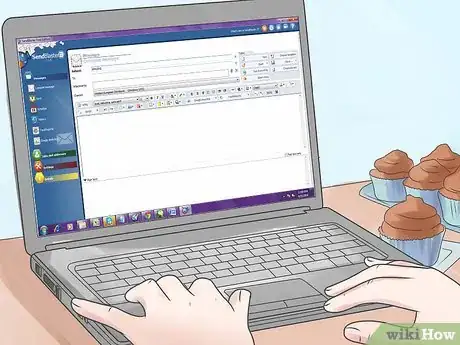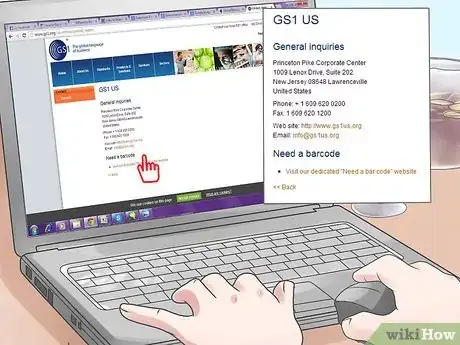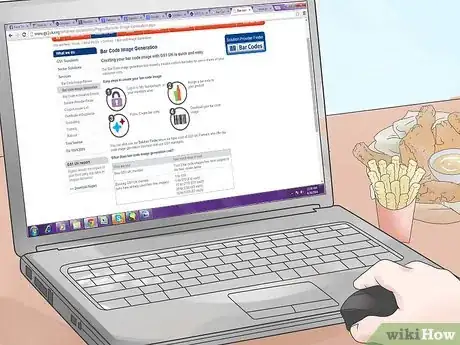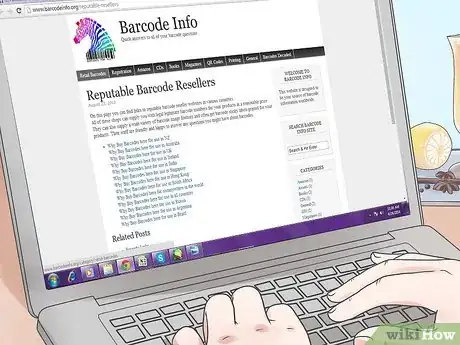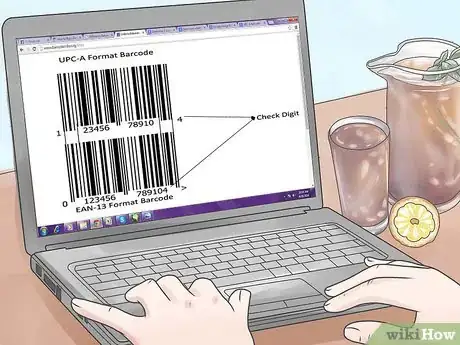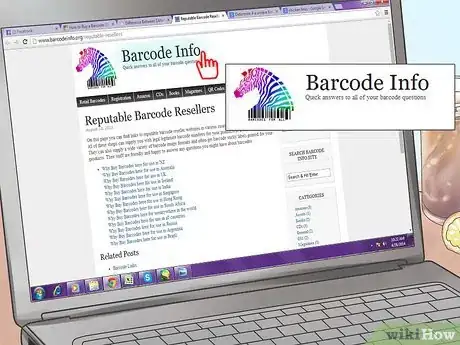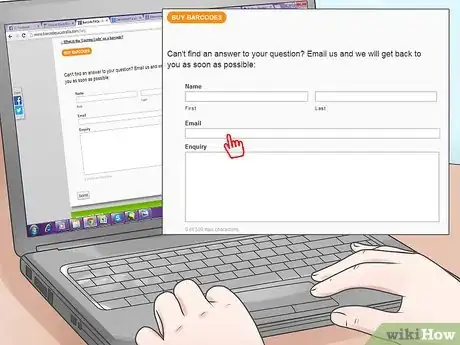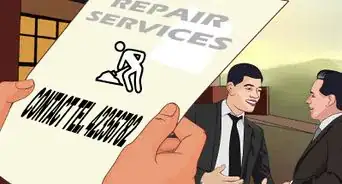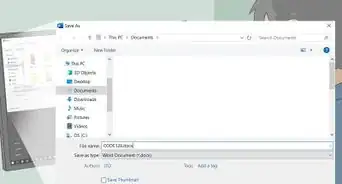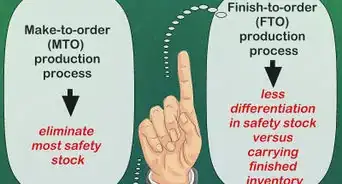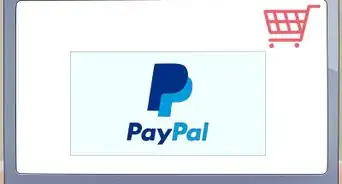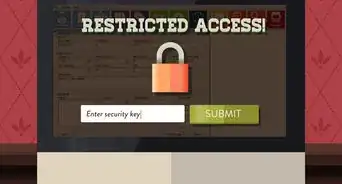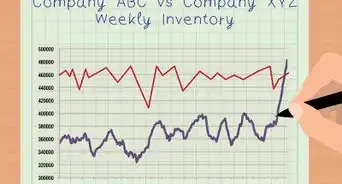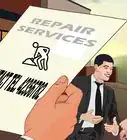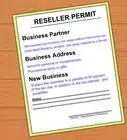This article was co-authored by Madison Boehm. Madison Boehm is a Business Advisor and the Co-Founder of Jaxson Maximus, a men’s salon and custom clothiers based in southern Florida. She specializes in business development, operations, and finance. Additionally, she has experience in the salon, clothing, and retail sectors. Madison holds a BBA in Entrepreneurship and Marketing from The University of Houston.
wikiHow marks an article as reader-approved once it receives enough positive feedback. In this case, several readers have written to tell us that this article was helpful to them, earning it our reader-approved status.
This article has been viewed 140,983 times.
Barcodes, those strips of alternating white and black vertical stripes of varying width that appear on just about everything you buy, have become a standard method of keeping track of products for both inventory and sale. Unlike serial numbers, which identify one unique item (akin to how a VIN number identifies a single car), barcodes classify categories of items by criteria like maker, type, size, style and price (for example, all Brand X, Model Y four-door sedans in red). If you intend to sell a product in a retail setting, you will likely need to have a legitimate barcode on the packaging. Fortunately, whether you need one barcode or thousands, or want them direct from the supervising organization or don't mind buying them secondhand, the process of acquiring barcodes is relatively simple.
Steps
Acquiring Barcodes Unique to Your Company
-
1Determine if a unique barcode is needed. If you are manufacturing products for retail sale, especially at major retail outlets, you will almost certainly need to have identifying barcodes on the packaging. Contact your intended retailers, including those online, for information.
- If you intend to use barcodes only to track the production process and/or manage inventory (that is, they will only be used internally), you as a manufacturer can define your own barcodes. However, it is required by the international barcode governing body (GS1) that these barcodes not leave your manufacturing premises or be offered for sale.
- If you are using the barcode in any other way than for internal tracking, you need one authorized by the GS1 (though you can purchase from other reputable third party sellers).[1]
-
2Contact GS1. A non-profit organization known as GS1 sets the standards for global commerce using barcodes. GS1 operates in over 100 nations, so you can likely contact an office in your country or region.
- To find the closest GS1 office to you, visit the GS1 website (www.gs1.org) and click on "Get your barcodes." Then choose the GS1 member organization closest to you from the drop-down menu. [2]
Advertisement -
3Join GS1. Purchasing barcodes directly from GS1 previously required a membership and payment of an annual fee, which is why some people preferred to buy their barcodes from resellers for a one-time charge.
-
4Estimate how many barcodes you need. The most important thing to understand is that each variation of each product you sell requires a unique barcode. You’ll need to determine exactly how many barcodes you need before you fill out the GS1 application.[3]
-
5Choose the GS1 option based on your barcode needs. https://www.gs1us.org/upcs-barcodes-prefixes/get-a-barcode
- Single GTIN: If you have only a few products that need barcodes, this might be the most cost-effective option for your company. Single GTINs are a great option for small companies that are looking to quickly list their products for sale. You can license a single GTIN for $30 and there is no annual renewal fee. (Global Trade Item Numbers (GTINs) are encoded into UPC barcodes.)
- GS1 Company Prefix: A GS1 Company Prefix allows businesses to get multiple barcodes at a single time, as well as identify locations, mixed cases, create coupons, and create higher levels of packaging like a case or pallet. GS1 Company Prefixes are great for companies with growing product lines. You can license a GS1 Company Prefix that comes in different “capacities” representing the maximum number of unique products you can identify with that license. As long as you renew your Membership every year, your product data will remain linked to your company information.
-
6Fill out the application and pay online. The GS1 check out process has 3 simple steps (https://www.gs1us.org/upcs-barcodes-prefixes/get-a-barcode):
- Select a single GTIN or GS1 Company Prefix and put them in your cart. Provide your contact information.
- Pay the required fees.
- You will get a welcome email from GS1 US within minutes. It includes all the important information you need to get started, including access to myGS1 US—your online member center.
-
7Create your barcodes. Instead of buying already-created barcodes as you do when purchasing secondhand, when purchasing through GS1 you will actually create the barcodes for your product(s).
- GS1 US offers a "GS1 US Data Hub" interface that enables you to create the barcodes yourself, or you can utilize (for a fee) an authorized GS1 US Solution Provider to do the work for you.[4]
- Contact GS1 US if you need to modify or add to the series of barcodes that you create.
Buying Barcodes a la Carte
-
1Establish whether you require a unique retail barcode. This is almost always the case if you have a retail product, as the vast majority of retailers require products going into their stores to have barcodes on the packaging.
- If you're selling your homemade candles at the farmer's market, you probably won't need a barcode; at the small shop on the corner, possibly so; and at a big-box retailer, certainly so. Some online retailers may also require barcodes for logistical purposes. Contact your intended retailers before proceeding with or without barcodes.
- Please note that this Method describes buying barcodes from resellers that have bought them in bulk from the originating organization (known as GS1). Some retailers, such as Target and Walmart, may not accept such secondhand barcodes (even though they are unique and legitimate) because they require you, the producer, to have a certificate from GS1. Check with your intended retailer(s) before buying barcodes.
-
2Determine whether you need a UPC-A or an EAN-13 barcode. In general, UPC-A barcodes are used in the USA and EAN-13 barcodes are used predominantly everywhere else. This means if you are primarily selling in the USA, you should get a UPC-A barcode; if you are predominantly selling outside of the USA, you should get an EAN-13.
- Truth be told, however, UPC-A and EAN-13 barcodes are virtually identical and almost always interchangeable; the latter has one more digit (13 instead of 12) as a country code.
-
3Find a barcode reseller that supplies the barcode you require. Resellers supply legitimate, legal barcodes for a one-off cost. Many of them supply both UPC-A and EAN-13 barcodes.
- There are several reputable places to buy UPC-A and EAN-13 codes. Be sure to do research as there are many sellers which don't sell GS1 codes and instead sell 'air codes' which GS1 will not verify.
-
4Determine how many barcodes you need. Buying secondhand barcodes a la carte gives you more flexibility to buy only the amount you need, though buying in bulk does save money per barcode. You will need 1 barcode for each unique product as well as product variation you sell.
- As an example of how many barcodes you may need, let's suppose you are selling a t-shirt with your logo on the front, in two colors (white and blue) and three sizes (S, M, L). Each combination of size and color requires a unique barcode, meaning you will need to buy six. With increased variety and complexity in your product line, the amount of unique barcodes you need can grow substantially.
- As one example from a barcode reseller, one barcode costs $5 (a one-time fee); 10 cost $15; and 100 cost $45.
-
5Buy your barcode from the reseller. Most resellers will promptly email an image of the barcode to you, along with your UPC/EAN number, allowing you to quickly incorporate it into your product packaging. You can then begin using your barcode.
- Make sure the barcode image sent to you is clear, and that the copies you render for your product packaging are of the same quality.
- Barcodes don't necessarily have to be black and white, but a high contrast between the alternating bars is essential for easy reading.
- In some cases product packaging (e.g. a matchbox) may be too small to incorporate a standard EAN and UPC barcode image supplied by resellers (37.29mm x 25.93). This is because GS1 recommends a minimum 80% reduction of a bar code's original size. If your product packaging is very small you can ask your reseller to scale down your barcodes to suit or you can obtain smaller eight digit EAN 8 barcodes from GS1 directly.
Community Q&A
-
QuestionWill reseller codes satisfy Amazon requirements?
 Community AnswerAccording to some of the major EAN code resellers, about 5% of their reseller EAN codes have encountered problems on Amazon. The problem is that the company information in GS1 for that code is different than what you are using it for. The only way to have the correct information in GS1 for an EAN code is to be registered with GS1.
Community AnswerAccording to some of the major EAN code resellers, about 5% of their reseller EAN codes have encountered problems on Amazon. The problem is that the company information in GS1 for that code is different than what you are using it for. The only way to have the correct information in GS1 for an EAN code is to be registered with GS1. -
QuestionWhat information is needed to identify a product's bar code?
 Gabriel GenellinaCommunity AnswerNone. The code (once purchased or leased from GS1) is yours to assign to any product you choose. You're responsible for maintain the "one code, one product" mapping.
Gabriel GenellinaCommunity AnswerNone. The code (once purchased or leased from GS1) is yours to assign to any product you choose. You're responsible for maintain the "one code, one product" mapping. -
QuestionCan I reuse a bar code on a different product?
 Gabriel GenellinaCommunity AnswerNo, unless you are absolutely certain no single instance of the original product exists in the world. Remember, people list used products too. GS1 rules prevent reuse (search "GTIN no reuse").
Gabriel GenellinaCommunity AnswerNo, unless you are absolutely certain no single instance of the original product exists in the world. Remember, people list used products too. GS1 rules prevent reuse (search "GTIN no reuse").
Warnings
- Purchase barcodes from a secondhand reseller with care. While this is a perfectly legal practice and the barcodes they sell are accepted by the vast majority of retailers, GS1 does not condone the reselling of barcodes in this way. Therefore, as far as GS1 is concerned, these reseller barcodes belong to the original purchaser that was given the company identification number and not to any company that purchased the number.⧼thumbs_response⧽
Expert Interview

Thanks for reading our article! If you'd like to learn more about buying a barcode, check out our in-depth interview with Madison Boehm.
